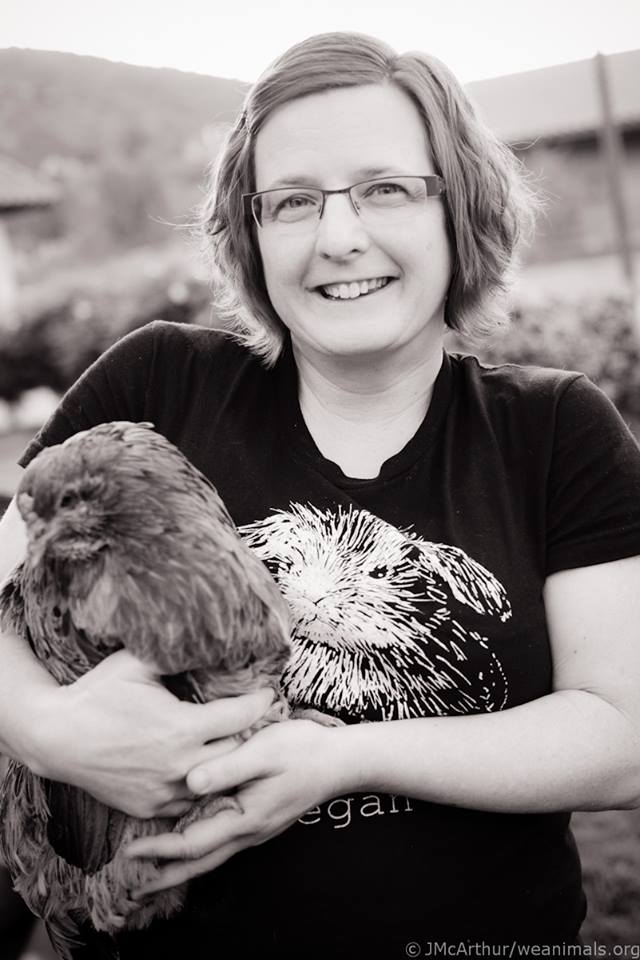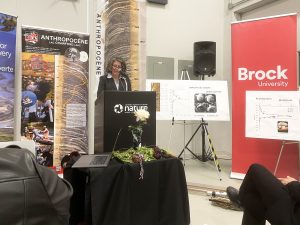
Keri Cronin, an associate professor at Brock, is sensitive to the suffering endured by abandoned cats and other animals. (Photo by Jo-Anne McArthur/We Animals)
When temperatures start falling, Keri Cronin’s concern starts rising as she tries to find shelters for homeless cats.
Cronin, associate professor in the Visual Arts Department in the Marilyn I. Walker School of Fine and Performing Arts, is sensitive to the suffering endured by abandoned cats and other animals, a passion that is evident in her research.
With winter around the corner, she recently put out a social media plea to borrow a cat shelter. Staff from Brock’s Facilities Management responded. They had already used their own time to build a shelter to protect a colony of cats living along the escarpment on the campus.
It worked. The cats have been placed in permanent homes, and the compartmentalized shelter now sits on the front porch of Cronin’s home.
Cronin’s passion for animals blends seamlessly into her research and teaching.
She is completing a book that examines how art imagery from 1880 to the First World War was an important tool to promote animal advocacy. Her research took her to Boston, New York City and London, “richly historic places in the animal welfare movement.”
Assembling the research material was surprisingly difficult.
“I was feeling a little like Nancy Drew,” she said, “trying to discover and bring together literature and images that weren’t catalogued. It was clear that animal advocacy isn’t valued, because it hasn’t been archived.”
But what did impress her was the “sophisticated understanding of the importance of images and the impact on how people thought about animals in the second half of the 19th century.” Last year she curated an online exhibit – Be Kind: A Visual History of Humane Education, 1880-1945 – exploring the relationship between humans and animals.
Cronin’s fourth-year Visual Arts course, Picturing Animals, explores how visual culture shapes the way that we think of animals and how we treat them.
This winter Cronin will take a sabbatical to research her next book, which explores the impact of photography on contemporary animal rights. As part of this project she will focus on the work of Jo-Anne McArthur, an internationally regarded animal rights photographer.
Noting the power of photography, Cronin refers to anti-whistleblower “ag gag” laws that make it illegal in some U.S. states to record undercover videos showing animal cruelty in farming practices. But more than just be a gruesome witness to cruelty, Cronin’s book also will explore positive measures like animal rescue and sanctuary.
Cronin is quick to point out colleagues who also study animals in their respective fields, such as English and Labour Studies. The Department of Sociology offers a Concentration in the field of Critical Animal Studies, among the first of its kind in a Canadian university.
She also admires the team, led by Facilities Management mechanic Mark Palcso, who built the cat shelter, and fed and watered the escarpment cats, including weekends and the winter holiday break.
“Being at Brock has been absolutely wonderful. I don’t know what’s in the water, but it’s amazing that there are so many of us researching the same issues and/or showing genuine compassion for animals.”











